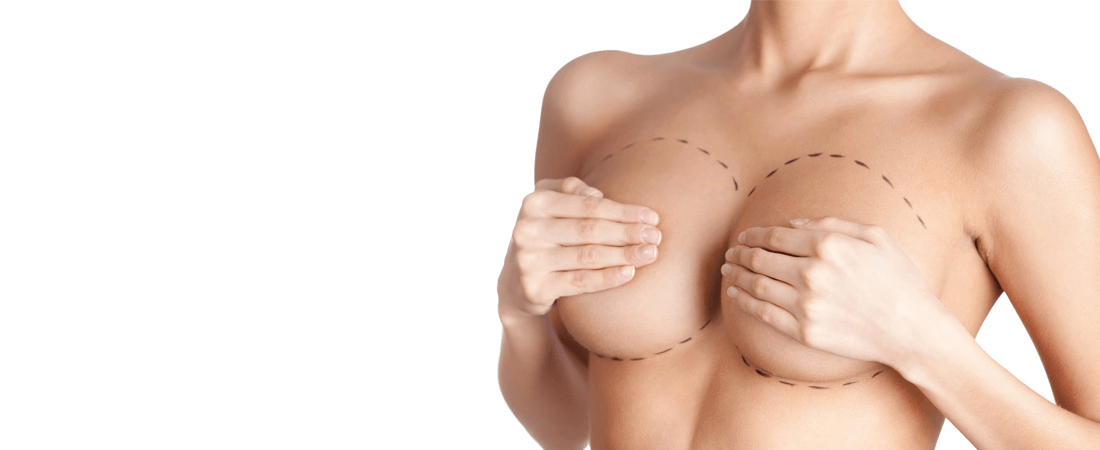Mammoplasty
Breast reduction surgery, also known as mammoplasty, is performed to remove excess fat, tissue, and skin. If you have large breasts, you can undergo a procedure to reduce the feeling of discomfort or achieve a size proportional to your body.
The purpose of this operation is to remove excess tissue, while at the same time ensuring adequate blood flow in the breast and sensitivity of the nipple-areolar complex (NAC), and most importantly, to obtain an acceptable aesthetic effect.
For mammoplasty, six main pedicle types are described:
- The upper one.
- The lower one.
- Lateral.
- Horizontal.
- Vertical.
- Medial vertical.
Regarding the breast skin resection scheme, an important step was taken in 1956 by Robert Wise: the “inverted T” pattern of resection (also known as the Wise pattern). All these pedicle techniques have been adapted to the Wise template. Arié was the first to describe reduction mammoplasty with a vertical scar to eliminate a horizontal inframammary scar in 1957.
In 1969, Lassus proposed an upper glandular–dermal pedicle for the transposition of the nipple-areola complex, with central en block resection of the skin, subcutaneous fat and mammary gland.
In 1994, Lejour modified the Lassus technique and performed pre-liposuction to reduce the volume to incisions.
In 1999, Hall-Findlay modified the superomedial pedicle using Orlando’s ideas from 1975 and combined a full-layered glandular pedicle with a vertical skin removal pattern.
This method with a superomedial pedicle reduced the likelihood of a breast shape that resembled a boxing glove pressed against the chest, a common problem with the inverted “T” technique.
Today, both vertical and inverted “T” resections with various pedicles and parenchymal resection patterns are used. Many articles in medical literature try to demonstrate the superiority of one method over another.
But the most important thing is not the method itself, but the one that the surgeon can perform best, achieving the most aesthetically pleasing result. When marking the breast before surgery, do not forget that when the upper pole is empty (flat), the nipple-areolar complex (NAC) should be placed 1–2 cm below the projection of the inframammary crease (IMC) on the front surface.
If you are planning a breast reduction in Yerevan, Armenia, consult a certified surgeon. It is important to understand what the operation entails, including possible risks and complications, and realistic expectations are important.
Mammoplasty is designed to solve problems such as:
Constant pain in the back, neck and shoulders.
Skin irritation/Chronic rash (related to breast size).
Neuralgia.
Limitations on physical activity.
Low self-esteem.
Difficulties finding suitable clothes and underwear
Breast reduction in Yerevan, Armenia, is not recommended:
In case of diabetes or cardiovascular disease
If you are overweight.
If you are not psychologically prepared to accept postoperative scars.
It is possible to have mammoplasty at any age, including adolescence. However, if your breasts are not fully developed yet, a second operation may be needed at a more mature age.
It is better to postpone the procedure if you have the following future plans:
Childbirth.
Breastfeeding (although some surgical methods do not affect breastfeeding)
Weight loss, as ir may change the breast size.
Risks of mammoplasty:
Breast reduction surgery carries risks similar to any other operation:
- Bleeding
- Infection
- Adverse reaction to anesthesia.
- Hematomas (usually temporary)
- Hypertrophic scar formation.
- Loss or reduction of nipple and areolar sensation).
- Difficulty or inability of breastfeeding.
- Asymmetry of the breasts (size/shape differences), which may require revision.
Before mammoplasty, you must:
- Undergo laboratory tests
- Have a mammogram
- Stop smoking
- Avoid taking aspirin, anti-inflammatory medications, and herbal supplements to prevent bleeding.
The mammoplasty procedure includes:
Liposuction.
- An incision around the areola and at the bottom of each breast.
- Removal of excess tissue, fat and skin.
- Repositioning the nipple and areola.
After mammoplasty:
- Your chest will be covered with bandages, gauze, or surgical dressings
- A drainage tube may be inserted
- Antibiotics are usually taken for up to 10 days
- You may experience increased sensitivity
- Swelling is expected
- Wear compression garments
- Avoid physical activity for 2 to 4 weeks
- Avoid underwire bras for several months
- Scars usually fade with time
Breast reduction surgery in Yerevan, Armenia, can relieve neck, shoulder, and upper back pain. It may also improve physical performance and lead to a more positive body image. While the result is noticeable immediately, final results may take several months



